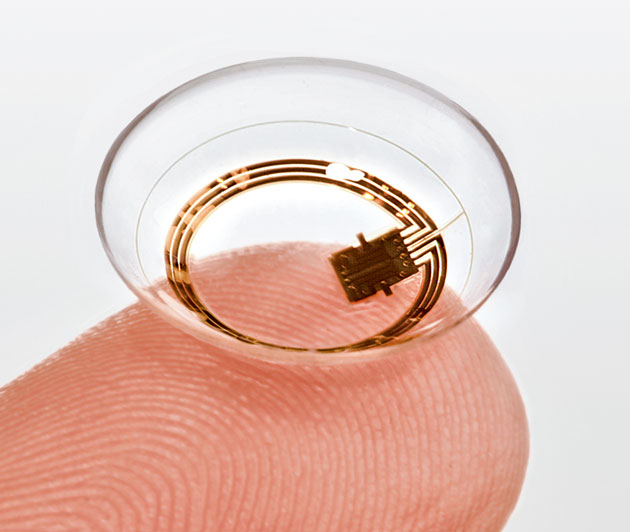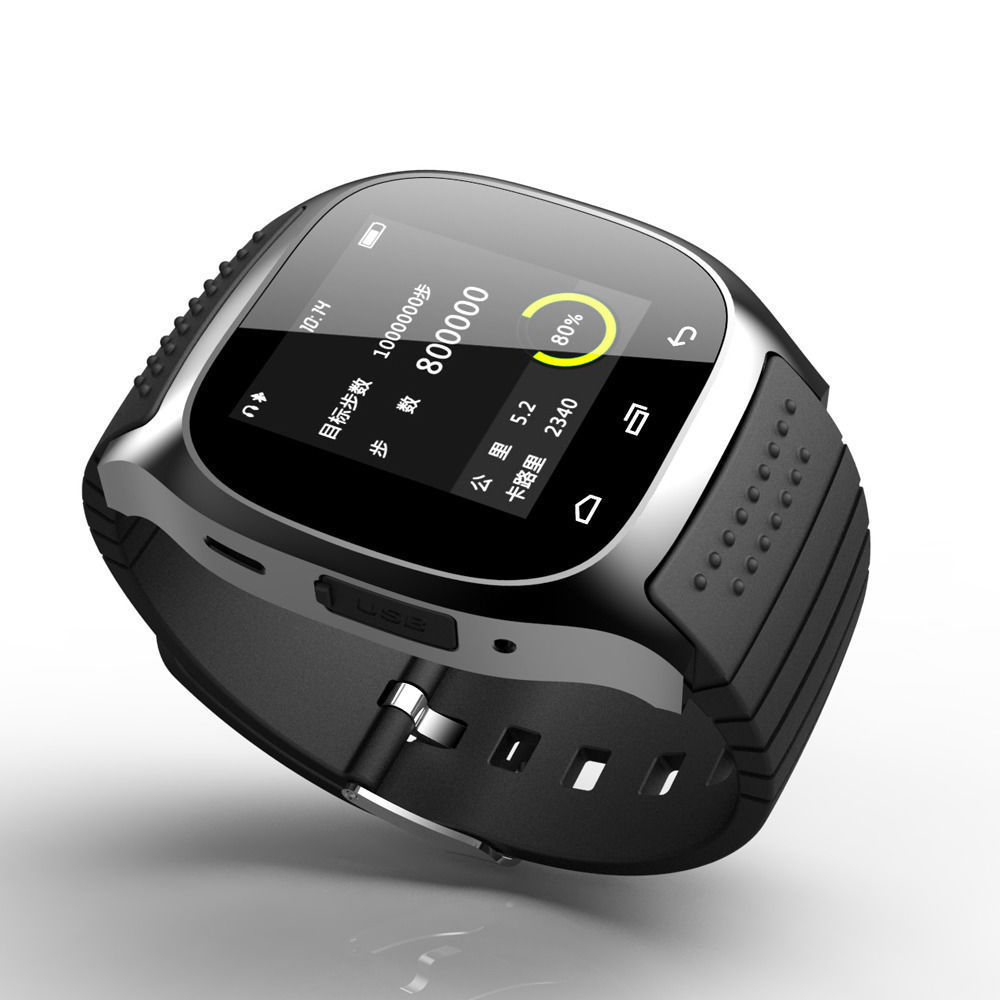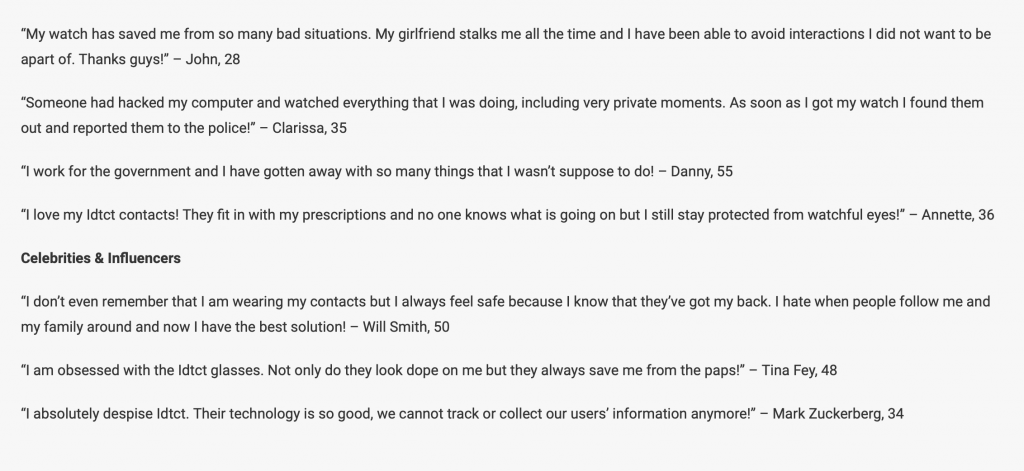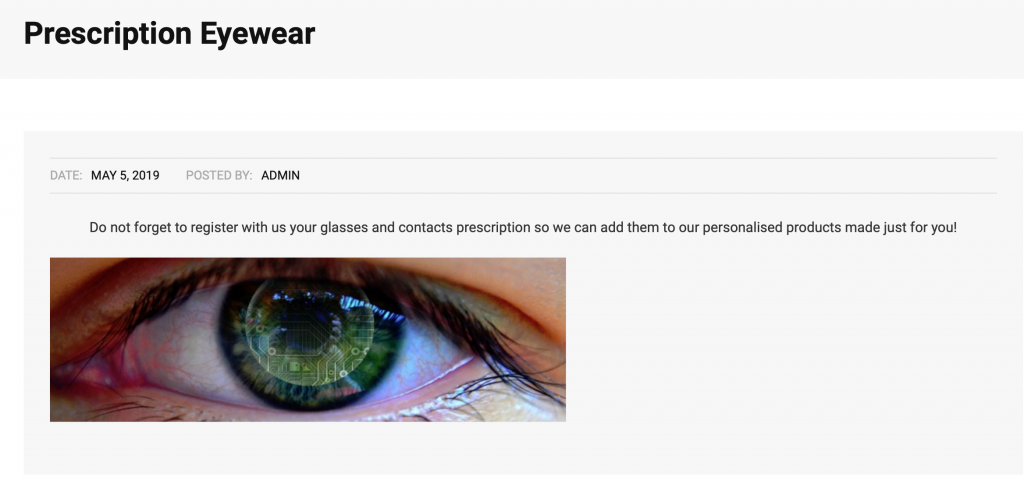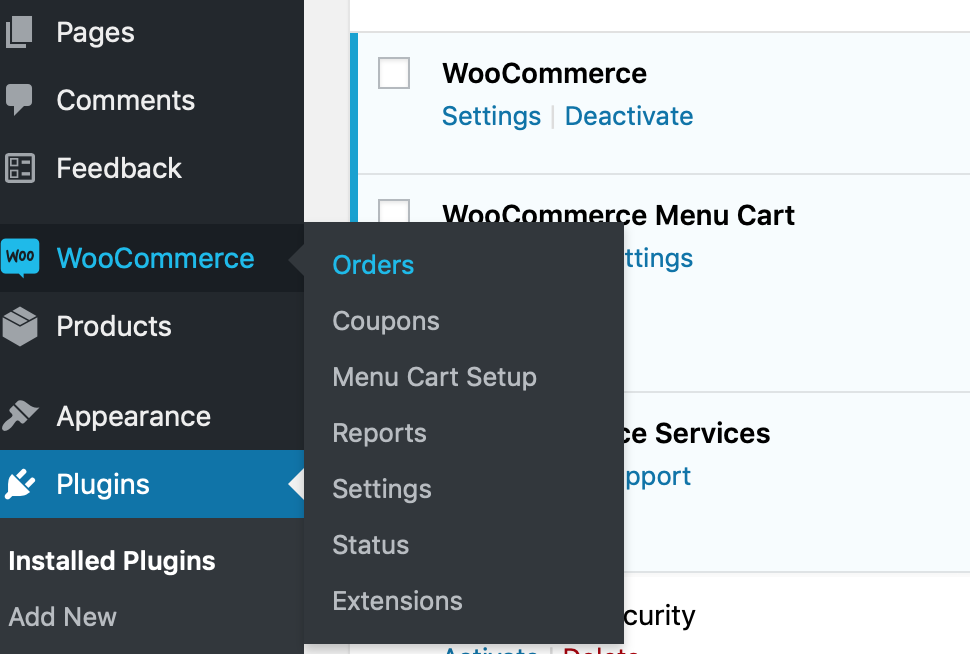Posted on May 7, 2019
Subjunctive Project – Idtct
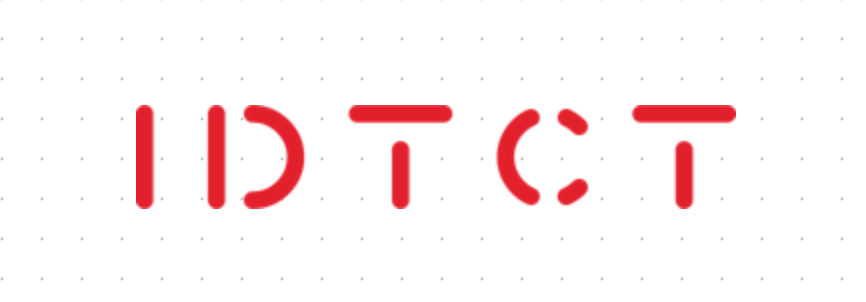
For this final project I thought it would be appropriate to look at surveillance culture since it is such a prominent part of our lives and I felt like we had not directly talked about it in class. The idea originated for a similar project that I had done for another digital studies class of mine that was based on surveillance. However, for Hacking, Remixing and Design one of the very notable themes and discussion topics, was that social networks, websites, apps, wearable trackers (i.e. FitBit) and pretty much any other form of technology that we use, collect so much personal data and information, without us even realizing. So on the same path, this subjective project fights back that type of data collection and more specifically the type that surveilles people whether legally or illegally through CCTV cameras or hidden microphones.
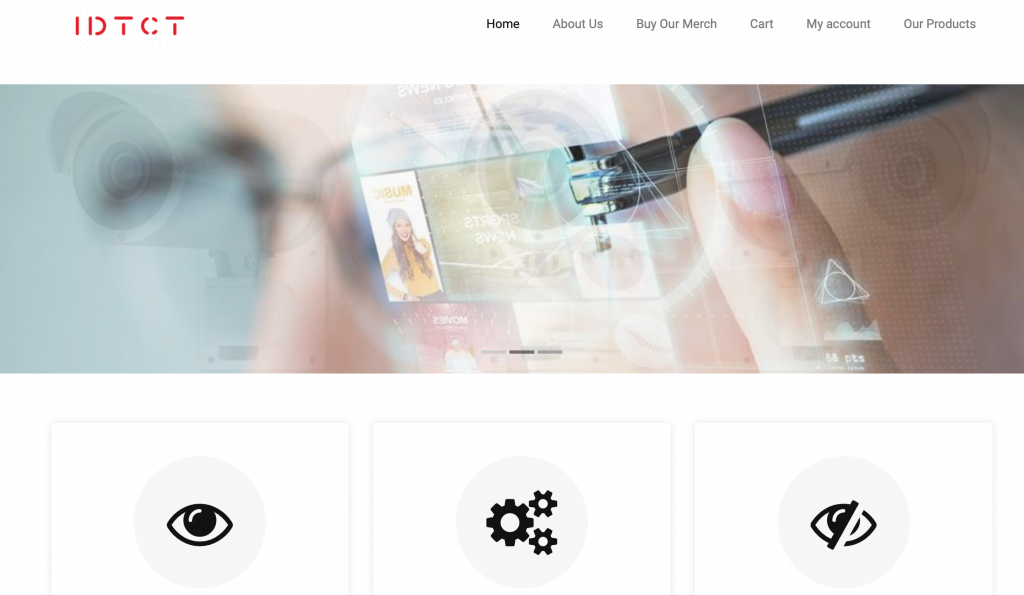
I decided to create a website in order to make it look like an e-shop where actual products are sold following the idea of an electronic store (e.g. FitBit, Apple, GearBeast, etc.). I also wanted to make the website look more futuristic, modern and minimal to portray this idea that a) the product actually exists and b) aesthetics and design play a crucial objective in selling a progressive tech product. As DiSalvo et al. discuss in Adversarial Design, the visualization and the aesthetics of design “express a cultural moment” where “designers are challenged to make sense and manipulate that information for social and cultural effect”. Unfortunately, I do not have the exact designs of what I would like these products to look like, which is why I used photos from smart glasses, smart watches or contact lenses that someone else has electronically created, but the idea behind them is what mattered most. I concentrated on the “political design” behind these products that was directed towards the invasion of one’s privacy, the ability to take that power back and stay protected against biases that very much so exist in the system.
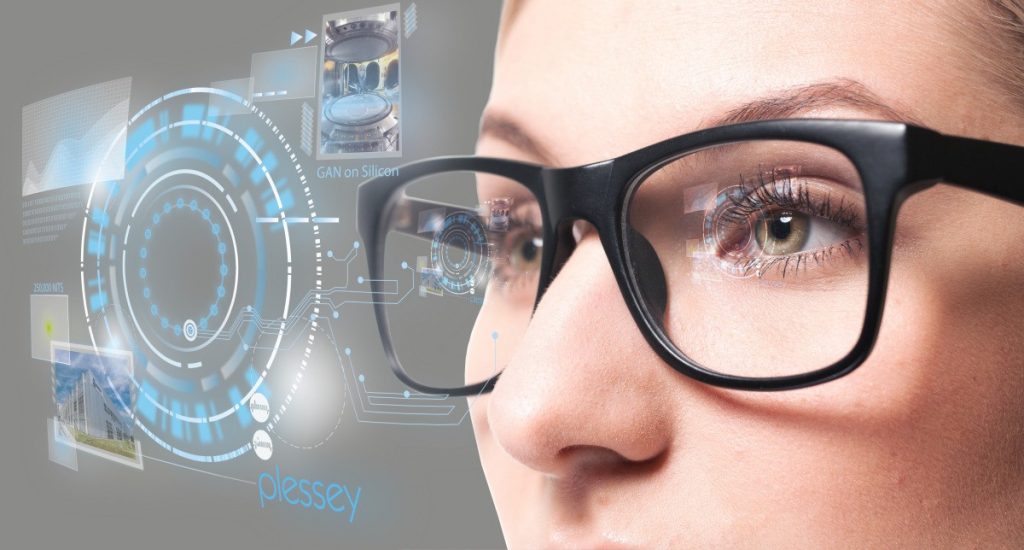
Furthermore, I wanted to focus on the multiple representations of what this technology could be, as there is not just one thing that goes into hacking, and specifically in this case; hacking the system. Therefore, bringing on both a technical change, with the technological part of it (the eye contacts, the glasses and the watch) and a social change along with it, since these products question the validity of the surveillance culture we are all so much apart of. This allows the consumers and buyers of the Idtct products to experience the “values of openness, accessibility, and decentralization” (Jaime Lee Kirtz, 2019). In a way these three tech objects/products try to overcome hegemony and work towards exposing the “1984” and “Black Mirror” ideals that are present in our society, maybe not to that extent but at least to some level. It also attacks racial biases that exist in the surveillance culture. People who sit behind these cameras, especially in governmental institutions, focus around racist pre-conceived notions that they have especially about people of color and automatically assume the worst brining automatic disadvantages to those people.
This idea was inspired from a smaller project I had done for a previous digital studies class of mine that focused on surveillance tech, surveillance culture and new technology and systems that are being created around the world. The contact lenses, glasses and watch are (supposedly) all able to detected CCTV cameras, any other type of camera, hidden microphones, bugs, hacks on your computer and phone, etc. As for the technology behind it I have thought about the idea of having the three products detect radio frequencies, or hidden networks and then notify the users either by sending alerts to their phones or immediately popping up on their smart watch. Then a new map would appear using AI on the glasses and contact lenses or on one’s phone and watch, that would redirect the user to take a new path undetected by the cameras, or pinpoint the location of the hidden microphone, hack, etc.
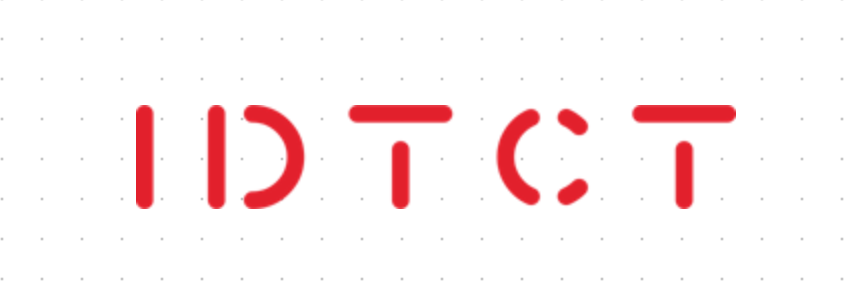
I came up with the logo Idtct because I thought it was catchy and familiar to people from Apple products. but also because the users literally “detect” the cameras and other surveillance systems. The idea was to contradict the Apple whose products start with a lower case “i” and continue with an upper case, whereas Idtct starts with an upper case letter and continues with the lower case ones. I then added the slogan “Products made for YOU” and the subtitle “Privacy, Protection, Defense” in all capital letters to emphasize that that is what the products we sell do. I used a really fun website to create the logo and the merchandise to make it look even more realistic, as nowadays anything sold and anything that is commercial is accompanied by its own personalized merch used as a marketing technique.

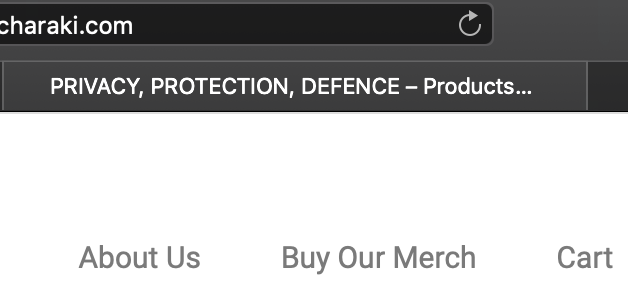
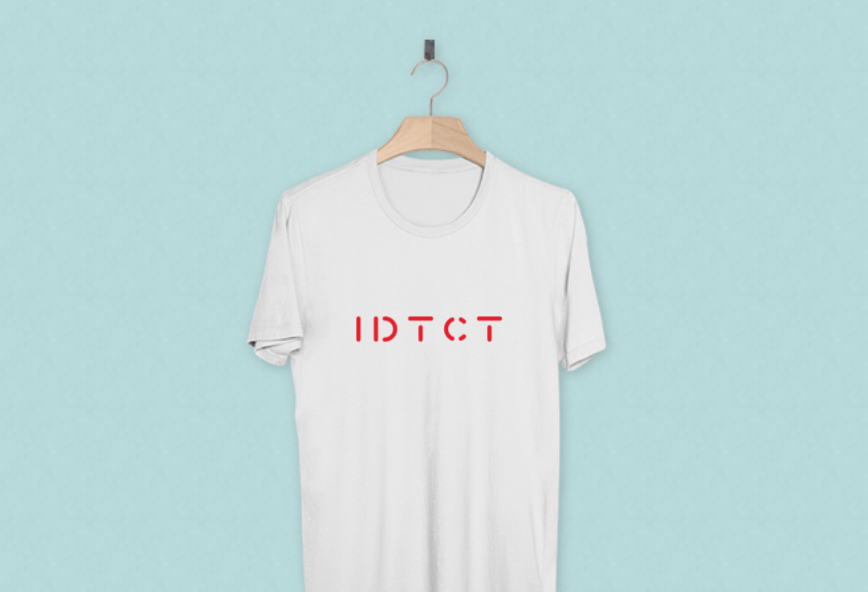
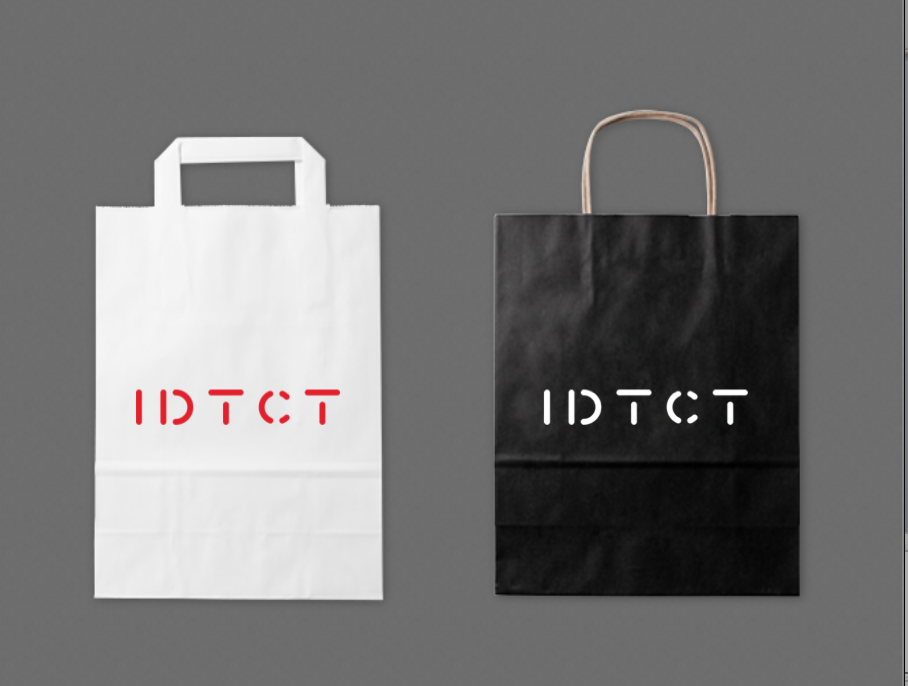

After suggestions, I included the idea of being able to see what others have said about the Idtct products. It was really entertaining making up comments and feedback clients and famous people or influences would have left for the products and come up with ideas of where and why they would use them.
Additionally, I included the option for people to send in their prescriptions so Idtct would be able to include them in their contact lenses or glasses so consumers would be have the ability to wear Idtct eye wear at all moments and not have to struggle with wearing normal prescription glasses on top of the Idtct products or not feel comfortable with purchasing the Idtct contact lenses.
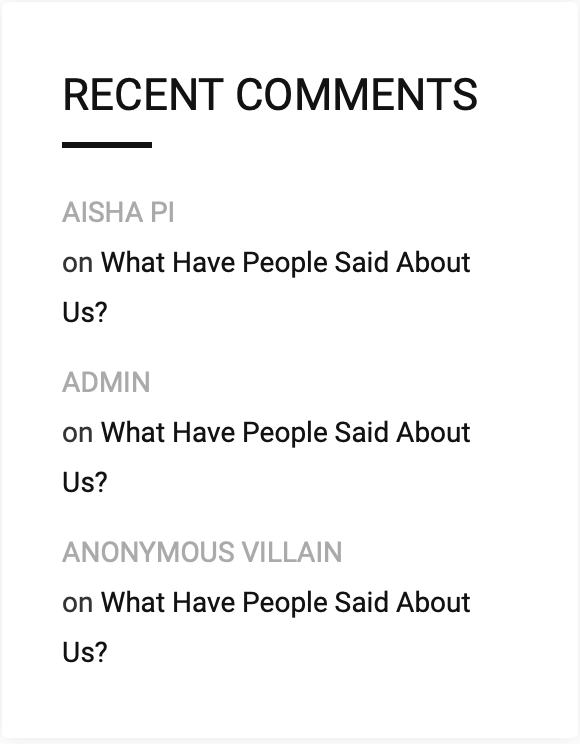
I also asked friends to go and comment, without me knowing what they would say, to make it look even more real.

I downloaded a plugin for e-shops to have the pages for the “Cart”, “My Account” come into play.
The page “About Us” includes the motto of the store also made from the same site I created the logo and the merchandise and included extra dramatization related to surveillance. Rhetorical questions that would arise concern in anyone that is reading them, especially in those who are about to purchase a product. The fact that they are already on the site means that they are paranoid enough or have a good enough reason to be there, so phrases and questions like: “Are you tired of being spied on?” “You Always Get To Know When You’re Being Watched, Listened To, Recorded And Spied On!”, will only reassure people that they need an Idtct product in their life. The Idtct logo is purposefully that big so it can attract attention but also precede the selling sentences like “No more tracking of your location or movements” and “Stay protected against racial discrimination and biases!”.
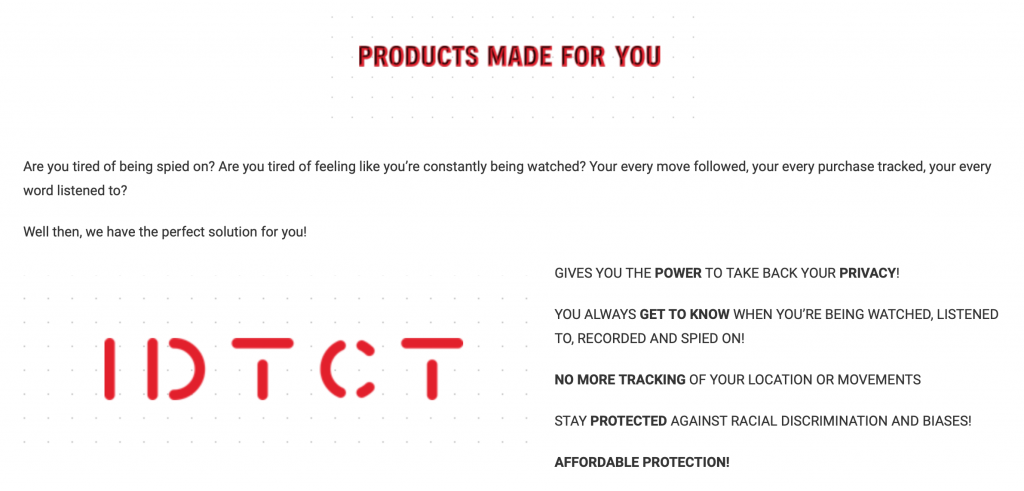
Bibliography
Carl DiSalvo, “Design and Agonism” from Adversarial Design (2012)
Jaime Lee Kirtz, “Beyond the Blackbox: Repurposing ROM Hacking for Feminist Hacking/Making Practices” from Ada: A Journal of Gender, New Media, and Technology (2018)
“Jual HiQueen Bluetooth Smart Watch Phone Mate SIM FM Pedometer For Android IOS IPhone Samsung Harga Spesifikasi.” Bandingkan Harga, profile.wimiu.com/jual-got-it-free-shipping-t8-smart-wrist-watch-sim-phone-mate-bluetooth-camera-for-iphone-android-samsung-intl-harga-spesifikasi/.
Whitney Phillips and Ryan M. Milner, Introduction and Chapter 1 from The Ambivalent Internet: Mischief, Oddity, and Antagonism Online(2017)
Anne Balsamo, “Design” from International Journal of Learning and Media (2009)
Stan Ruecker and Jennifer Roberts-Smith, “Experience Design for the Humanities: Activating Multiple Interpretations” from Making Things and Drawing Boundaries: Experiments in the Digital Humanities (2017)
Kari Kraus, “Finding Fault Lines: An Approach to Speculative Design”from The Routledge Companion to Media Studies and Digital Humanities (2018)
“Is Excessive-Tech Lenses the Future for Contact Lenses?” TechOverall, 10 May 2018, techoverall.com/is-high-tech-lenses-future-for-contact-lenses/.
Basu, Victor. “Every Thing You Need to Know about Smart Glasses.” Medium, The Startup, 14 Nov. 2018, medium.com/swlh/every-thing-you-need-to-know-about-smart-glasses-eb3d2e0a62de.
Ward, Jason. “Smartglasses as Smartphones, Your Social and Privacy Concerns Won’t Matter.” Windows Central, Windows Central, 14 Aug. 2017, www.windowscentral.com/smartglasses-may-replace-smartphones-if-they-overcome-these-barriers.

